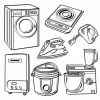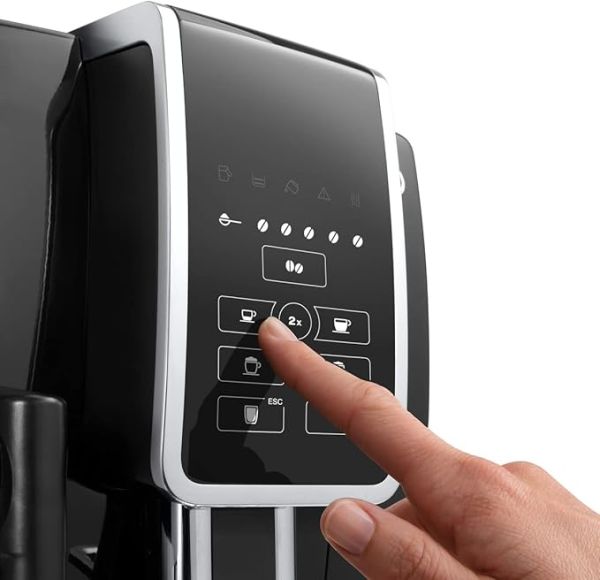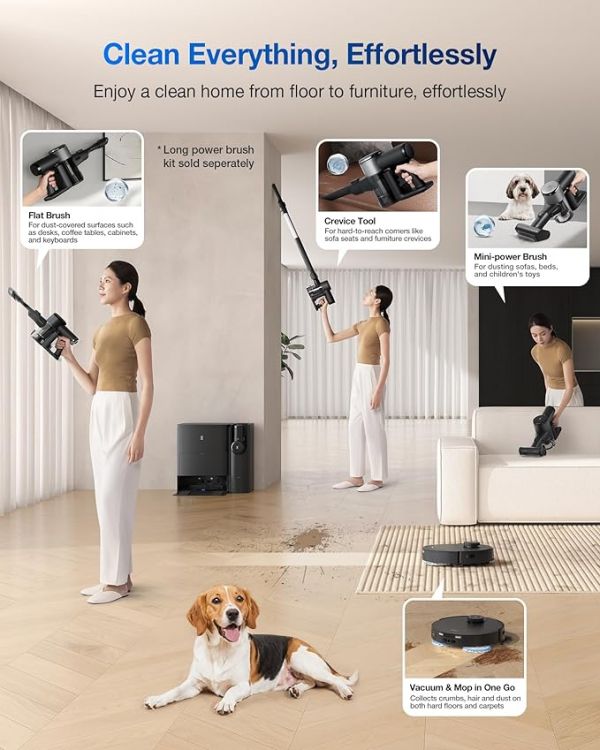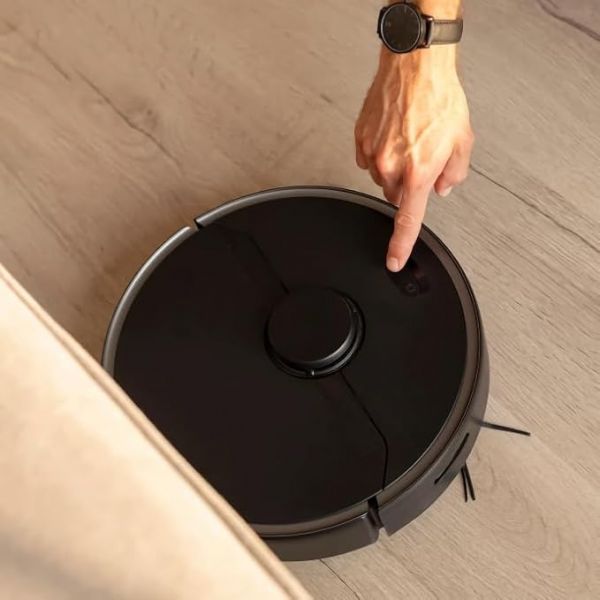Choosing the Perfect Coffee Machine for Your Morning

- Introduction – Why Your Morning Coffee Matters
- Types of Coffee Machines and Their Benefits
- Drip Coffee Makers
- Espresso Machines
- Pod & Capsule Coffee Machines
- Bean-to-Cup Machines
- Manual Brewing Methods (French Press, Pour-Over, AeroPress)
- Key Factors to Consider When Choosing a Coffee Machine
- Brew Quality & Flavor Profile
- Brewing Speed & Capacity
- Ease of Cleaning & Maintenance
- Size & Kitchen Space
- Budget & Value
- Energy Efficiency
- Espresso vs. Drip Coffee – Which Is Right for You?
- Taste and Strength
- Brewing Process
- Cost & Maintenance
- Understanding Coffee Machine Features
- Grinder Types: Blade vs. Burr
- Pressure Ratings
- Milk Frothing Systems
- Programmable Settings
- Temperature Control
- Water Filters
- Top Coffee Machines to Consider in 2025
- Coffee Beans and Grind Size – The Hidden Secret
- Maintenance & Cleaning Tips for Longevity
- Coffee Machine Myths Debunked
- Eco-Friendly Coffee Making
- Final Thoughts – Your Perfect Morning Cup
- FAQ Section
Introduction – Why Your Morning Coffee Matters
Coffee is more than just a beverage — for millions, it’s a vital morning ritual that kickstarts the day. The perfect cup provides comfort, alertness, and a moment of peace before the rush. However, the quality and flavor of your morning brew heavily depend on the coffee machine you use.
Choosing the right coffee machine can transform your morning routine by delivering consistent, delicious coffee with ease. Whether you crave a quick espresso shot or a slow-brewed drip coffee, finding the ideal machine tailored to your needs, lifestyle, and budget will elevate your daily coffee experience.
In this comprehensive guide, we will explore the different types of coffee machines, their benefits, key features to look for, and expert tips to help you select the perfect coffee maker for your morning.
Types of Coffee Machines and Their Benefits
Coffee machines come in many varieties, each designed to cater to different preferences, brewing methods, and convenience levels. Here’s an overview of the most popular types:
Drip Coffee Makers
Drip coffee makers are among the most common and affordable machines. They work by heating water and allowing it to drip slowly over coffee grounds, which then brew and collect in a pot below.
Benefits:
-
Can brew multiple cups at once, perfect for families or offices.
-
Usually programmable with timers for automatic brewing.
-
Easy to use and maintain.
Considerations:
-
Flavor can be milder compared to espresso or manual methods.
-
Limited control over brewing temperature and strength.
Espresso Machines
Espresso machines brew coffee by forcing hot water under high pressure through finely ground coffee. They produce a strong, concentrated shot with a signature crema on top. There are several types:
-
Manual: Requires hands-on control for grinding, tamping, and extraction; preferred by enthusiasts.
-
Semi-Automatic: Automates pressure and water flow but needs manual grinding and tamping.
-
Fully Automatic: Performs grinding, tamping, brewing, and often milk frothing with the push of a button.
Benefits:
-
Delivers rich, intense coffee and espresso-based drinks like cappuccinos and lattes.
-
Offers more control over brewing parameters with manual and semi-automatic models.
-
Convenient and fast with fully automatic machines.
Considerations:
-
Manual models have a learning curve.
-
Fully automatic machines are generally pricier.
Pod & Capsule Coffee Machines
These machines use pre-filled coffee pods or capsules, offering quick and mess-free brewing.
Benefits:
-
Extremely convenient and consistent taste.
-
Compact size, ideal for small spaces.
-
Minimal cleanup required.
Considerations:
-
Higher cost per cup compared to ground beans.
-
Limited variety based on pod availability.
-
Environmental concerns, though some brands offer recycling.
Bean-to-Cup Machines
Bean-to-cup machines grind fresh beans for every cup and automate the entire brewing process, including milk frothing.
Benefits:
-
Freshness guaranteed with on-demand grinding.
-
One-touch operation for multiple drink types.
-
Customizable strength, temperature, and milk texture.
Considerations:
-
Higher upfront cost.
-
Require regular cleaning and maintenance.
Manual Brewing Methods (French Press, Pour-Over, AeroPress)
Though not machines, manual brewing methods deserve mention for those seeking full control over their coffee.
Benefits:
-
Allows precise control over brewing time, temperature, and ratio.
-
Produces rich and nuanced flavors.
-
Portable and inexpensive.
Considerations:
-
Time-consuming.
-
Not ideal for quick mornings or large quantities.
Key Factors to Consider When Choosing a Coffee Machine
Choosing the best coffee machine requires balancing features, convenience, and personal taste.
Brew Quality & Flavor Profile
Different machines highlight different flavor profiles. Espresso machines extract rich, intense flavors, while drip coffee makers yield a smoother, milder cup. Determine which style you prefer.
Brewing Speed & Capacity
Consider how many cups you typically need and how quickly you want them. Drip machines and bean-to-cup models can serve several people quickly. Pod machines and espresso machines excel at single servings.
Ease of Cleaning & Maintenance
Fully automatic machines often have self-cleaning cycles and removable parts. Pod machines require minimal cleanup, while manual espresso machines and drip makers need more hands-on care.
Size & Kitchen Space
Measure your available countertop space. Pod machines and manual espresso makers are compact, whereas bean-to-cup and large drip machines take more room.
Budget & Value
Coffee machines range from $30 budget models to $3000+ professional systems. Decide what features you truly need and how much you want to invest.
Energy Efficiency
Look for machines with energy-saving modes or auto shut-off, especially if used daily.
Espresso vs. Drip Coffee – Which Is Right for You?
Understanding the differences between espresso and drip coffee helps narrow your choice.
Taste and Strength
-
Espresso: Bold, concentrated, with crema and complex flavor notes. Base for milk drinks.
-
Drip Coffee: Milder, smooth, served in larger quantities.
Brewing Process
-
Espresso: High-pressure extraction (9–15 bars), fine grind, fast (25–30 seconds).
-
Drip: Gravity-fed, medium grind, slower (4–6 minutes).
Cost & Maintenance
Espresso machines tend to be pricier and require regular cleaning. Drip machines are cheaper and simpler to maintain.
Understanding Coffee Machine Features
Grinder Types: Blade vs. Burr
-
Blade Grinder: Cheaper, chops beans unevenly, less flavor consistency.
-
Burr Grinder: Uniform grind size, preferred for espresso and quality drip coffee.
Pressure Ratings
Espresso machines use pressure to extract flavors. Optimal pressure ranges between 9 and 15 bars.
Milk Frothing Systems
-
Steam Wand: Manual, offers control but requires practice.
-
Automatic Frother: Provides consistent foam easily, ideal for beginners.
Programmable Settings
Some machines allow adjustment of temperature, strength, cup size, and milk texture for personalized coffee.
Temperature Control
Stable water temperature (around 195-205°F) ensures proper extraction.
Water Filters
Built-in water filters improve water quality, protect the machine, and enhance flavor.
Top Coffee Machines to Consider in 2025
| Brand/Model | Type | Best For | Price Range | Pros | Cons |
|---|---|---|---|---|---|
| De’Longhi Dinamica ECAM 350.50.B | Fully Automatic Bean-to-Cup | Espresso & Milk Drinks | Mid-Range | LatteCrema system, easy to clean | Limited drink presets |
| Breville Barista Express | Semi-Automatic Espresso | Coffee Enthusiasts | Mid to High | Integrated grinder, manual control | Requires learning |
| Keurig K-Elite | Pod Machine | Quick Single Cups | Budget | Fast, simple, compact | Pods costly, limited flavors |
| Technivorm Moccamaster | Drip Coffee Maker | Large Batch Drip Coffee | Mid to High | Excellent brew quality | Expensive |
| Nespresso Vertuo Plus | Capsule Machine | Consistency & Convenience | Mid | Wide capsule variety | Proprietary pods |
Coffee Beans and Grind Size – The Hidden Secret
The quality of your coffee beans and their grind size are crucial to brewing success.
-
Use freshly roasted whole beans and grind immediately before brewing.
-
Match grind size to machine type:
-
Coarse grind for French press.
-
Medium grind for drip coffee.
-
Fine grind for espresso.
-
-
Store beans airtight in a cool, dark place to maintain freshness.
Maintenance & Cleaning Tips for Longevity
Regular care prolongs machine life and preserves coffee flavor.
-
Daily: Empty grounds, rinse milk frother, wipe machine exterior.
-
Weekly: Clean drip trays, brew units, and water tanks.
-
Monthly: Descale the machine using recommended solutions.
-
Replace water filters as advised.
Coffee Machine Myths Debunked
-
More pressure always means better espresso: Not necessarily; too much pressure can cause bitterness.
-
Expensive machines always make better coffee: Skill, beans, and maintenance are equally important.
-
Pod machines produce inferior coffee: Modern capsules deliver surprisingly good quality, but may lack variety.
Eco-Friendly Coffee Making
Sustainability matters to many coffee lovers.
-
Opt for reusable pods or compostable capsules.
-
Choose machines with energy-saving features.
-
Support ethically sourced coffee beans with fair trade certifications.
Final Thoughts – Your Perfect Morning Cup
The perfect coffee machine balances your taste preferences, lifestyle, budget, and kitchen space. Whether you prioritize convenience, flavor, or brewing experience, today’s market offers options to satisfy every coffee lover.
Investing time in choosing the right machine means waking up every morning to your ideal cup — a comforting start to the day that fuels your productivity and enjoyment.
FAQ Section
Q: What’s the difference between bean-to-cup and pod coffee machines?
A: Bean-to-cup machines grind fresh beans and brew automatically; pod machines use pre-packaged coffee pods for convenience.
Q: Is a higher bar pressure always better for espresso?
A: Optimal espresso extraction occurs between 9-15 bars; more pressure doesn’t guarantee better taste.
Q: Can I make tea in a coffee machine?
A: While possible, coffee machines are designed for coffee; tea brewing is best done with dedicated kettles or tea makers.
Q: How long does a coffee machine typically last?
A: With proper care, most coffee machines last 5-10 years depending on usage and maintenance.








